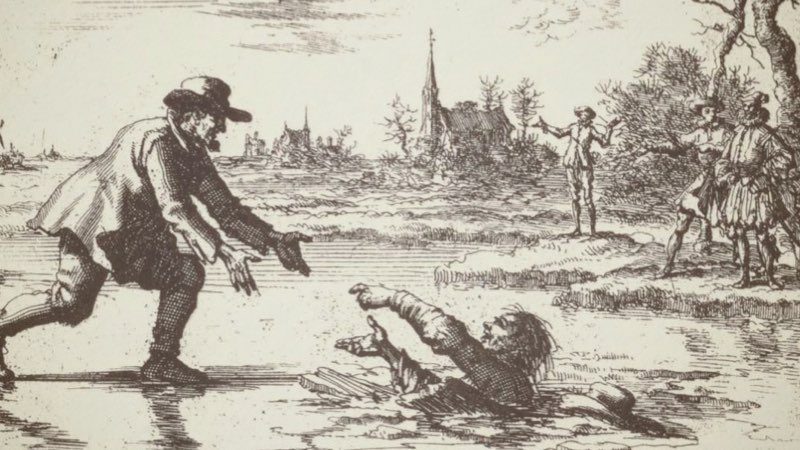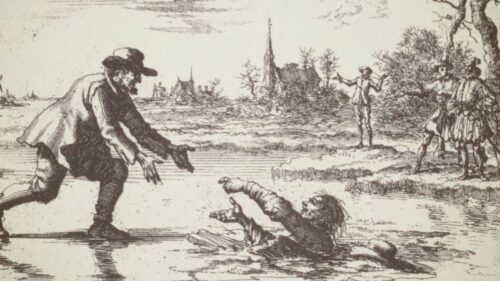
29. Nero’s Cruelties Against the Christians
Of the Unheard of Cruelties Nero Practiced in Slaying the Pious Christians
Touching the manner in which the Christians were tortured and killed at the time of Nero, A. Mellinus gives the following account from Tacitus and other Roman writers: namely, that four extremely cruel and unnatural kinds of torture were employed against the Christians:
Firstly, that they dressed them in the skins of tame and wild beasts, that they might be torn to pieces by dogs or other wild animals.
Secondly, that they, according to the example of their Saviour, were fastened alive on crosses, and that in many different ways.
Thirdly, that the innocent Christians were burned and smoked by the Romans, with torches and lamps, under the shoulders and on other tender parts of their naked bodies, after these had been cruelly lacerated with scourges or rods. This burning was done also with shavings and fagots, they (the Christians) being tied to stakes worth half a stiver. Therefore they called the Christians sarmenticii, that is, fagot people, and semissii, that is, half stiver people; because they stood fastened to half stiver stakes, and were thus burned with the slow fire of fagots.
Fourthly, that these miserable, accused Christian martyrs were used as candles, torches, or lanterns, to see by them at night.
Of those who were burned, some were tied or nailed to stakes, and held still by a hook driven through the throat, so that they could not move the head when the pitch, wax, tallow, and other inflammable substances were poured boiling over their heads, and set on fire, so that all the unctious matter of the human body flowing down made long, wide furrows in the sand of the theatre. And thus human beings were lighted as torches, and burned as lights for the wicked Romans at night.
Juvenal and Martial, both Roman poets, and Tertullian, state this in a different manner, namely, that the Romans wrapped them in a painful or burning mantle, which they wound around their hands and feet, in order to melt the very marrow in their bones.
Furthermore, it is stated by A. Mellinus (from the aforementioned authors), concerning those mantles, that they were made of paper or linen, and having been thickly coated with oil, pitch, wax, rosin, tallow, and sulphur, were wrapped around their whole body, and then set on fire. For this spectacle Nero gave the use of his gardens, and appeared himself among the people in the garb of a charioteer, taking an active part in the Circusian games; himself standing in the circus, and, as charioteer, guiding a chariot.
These proceedings, according to the testimony of Tacitus, although it had the appearance that the Christians were punished as malefactors who had deserved the extremest penalty, nevertheless moved the people to compassion; for they understood well enough that the Christians were not exterminated for the good of the common weal, but simply to gratify the cruelty of one man, Nero.
Compare Abr. Meltin. 1st book van de Hist order vervolg. en Mart printed Anna 1619 fol. 11. col. 4. and fol. 12. col. 1. with Tacit. Annal. lib. 15. and Tcrtul. Apol. Contr. Gent. cap. 50 and adv Marc. cap. 5. Martinal. Epig. 25. lib. 25.
Thieleman J. Van Braght (1625-1664) was an Anabaptist who is best known for writing a history of the Christian witness throughout the centuries entitled “The Bloody Theater or Martyrs Mirror of the Defenseless Christians who baptized only upon confession of faith, and who suffered and died for the testimony of Jesus, their Saviour, from the time of Christ to the year A.D. 1660” (1660).
Thieleman J. Van Braght, Martyrs Mirror




